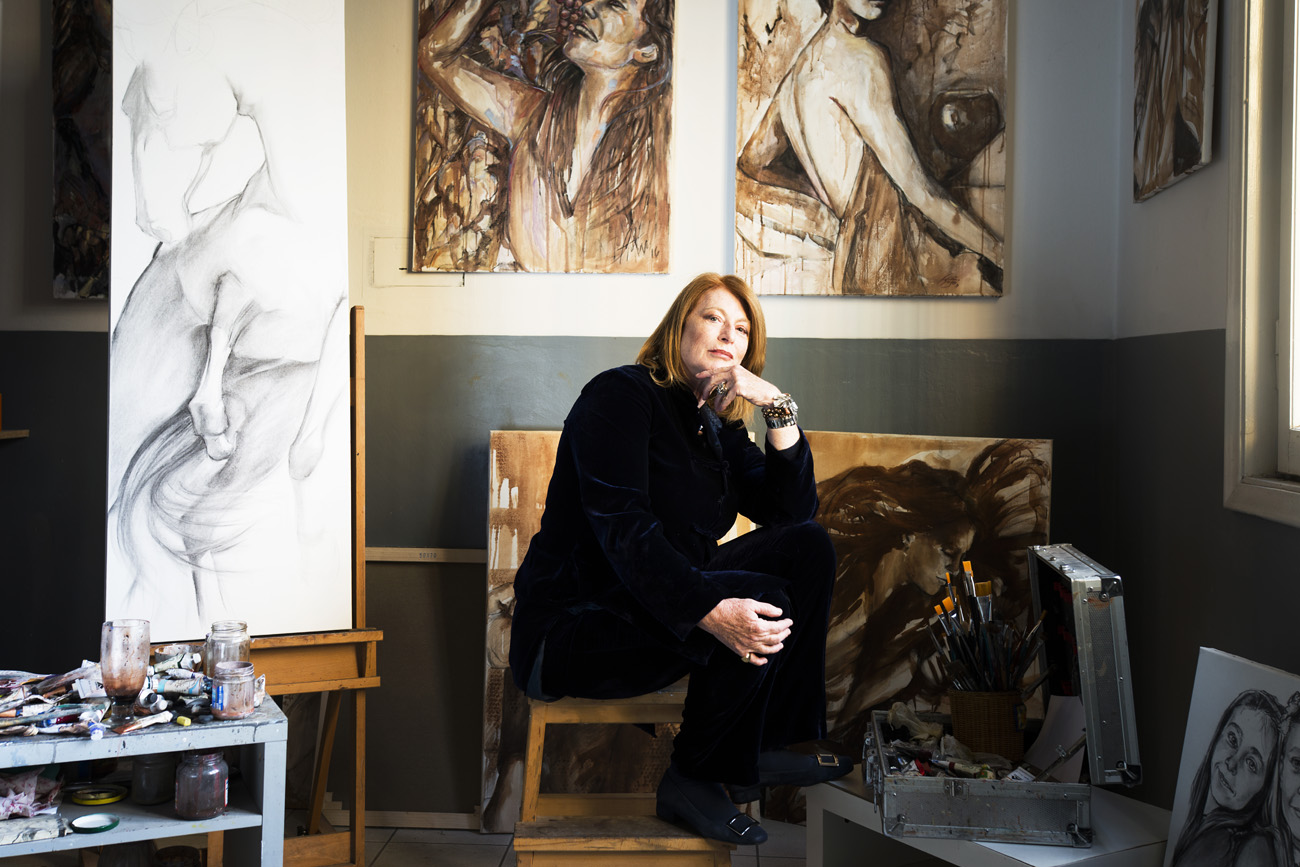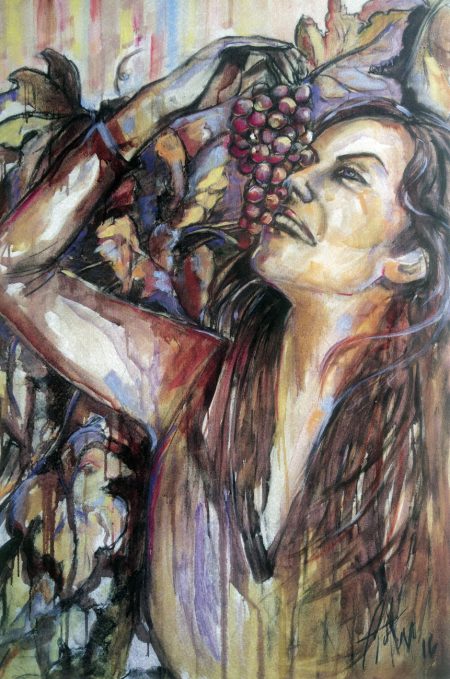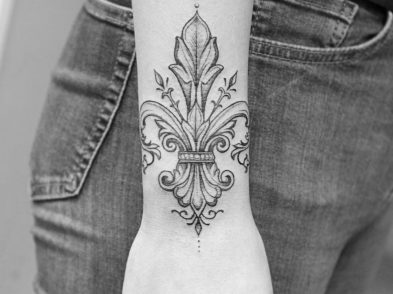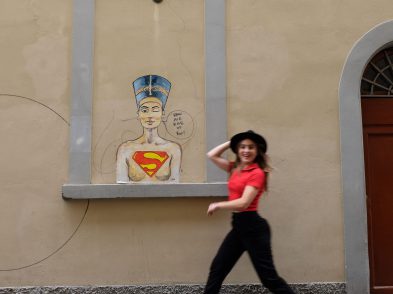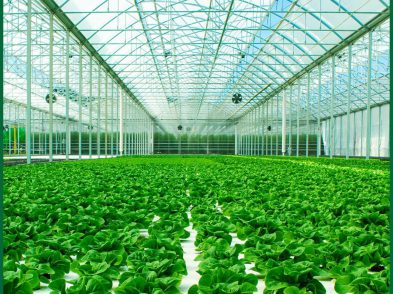For many, the pull of Italy lies in its traditions. The concept of Made in Italy is more than just a quality marker: it’s a window into the lives of those who breathe their country’s customs every day. Embodying this spirit perfectly is Elisabetta Rogai, the talented painter who sits at the crossroads of so many facets of Italian culture. Known in the art world for her medium-defying methods, she has reinvented her career in recent years, foregoing more traditional media and choosing to paint with wine. The “wine artist” sat down with The Florentine to discuss her work, inspiration and the apex of a commission she received for one very special occasion.
Elisabetta is no stranger to creativity. Being from Florence, she considers it in her DNA. Art and history were all around her as she grew up, and by the age of nine, she had picked up a paintbrush. She staged her first exhibition at just 17, but after that any realistic outlook for a career in the arts began to fade.
“I didn’t go to art school because in those years, fine arts schools were for hippies and disreputable people. So I went to an istituto magistrale, where I studied psychology. But I never stopped painting. I continued to study and now I’m an academician at the Accademia delle Arti del Disegno.”
Her fame as a painter was widespread long before she ever considered using wine as a medium. When Italy headed the Presidency of the Council of the European Union in 2003, Rogai was asked to design the label for the Italian presidency’s official wine. Not yet familiar with the wine world, she knew very few companies she could involve in the project, in the end choosing Castello di Monsanto, creating the label for their wine Astrid. “Together, we did a good job. They make excellent wine, they’re exquisite people, and they also collect my paintings,” she says with a hint of pride.
But it was in 2010 that her career was effectively relaunched. The inspiration was classic. “I was at a lunch and the host knocked over a glass of wine. His wife pulled out everything, salt, white wine, etc., but then she said, ‘It’s stained for good.’ I couldn’t get this thought out of my mind, ‘It’s stained for good’, ‘it’s stained for good.’ I love challenges, so I started to boil wine and re-boil it, but it lost its organoleptic qualities: it didn’t smell like wine anymore, I had cooked it too much. That’s when I thought about a professor of organic chemistry who I know. I asked him if there was a way to {prepare wine for painting} and together we found a way.” To demonstrate the complex process, she holds up a bottle of thick liquid, no more than two or three tablespoons. “This is a litre,” she says.
Using the bottle of thick boiled wine, she explains that she need only combine pure wine when she wants to create a more transparent effect. When looking for darker hues, more boiled wine is added to the mix. Then there’s the planning stage: there needs to be a good drawing underneath. Without it, nothing is possible. “It’s like a water painting. If there’s no drawing or it’s not done well, it’s not going to work.”
As quickly as she picked up her new medium, she knew she needed to explore as many materials as possible. Rogai likens her curiosity to that of a child, explaining that she finds something, tries it a few times, then gets bored or grows comfortable with it and passes on to the next thing. Her oddest material to date? Blue jeans. The stunning peculiarity of this medium is that it mutates over time. As the wine ages on the canvas, so too does the image, changing colours and bestowing entirely new effects.
Elisabetta’s fame as an EnoArtist has certainly made the rounds. One look at her website and you’ll be hurrying off to her next live event, where you’ll soon fall under the spell of this charming medium. Her live events are often the talk of the town, like her presence at Ruffino’s 140th anniversary dinner and the recent event “L’uomo di…Vino” during Taste 2018. Knowledge of her work even came to the attention of the mayor of Siena, leading to a crowning moment in Elisabetta’s career: painting the drappellone for the August Palio in 2015. Being the year of Expo, when Italy’s food and wine culture was a hot topic, Elisabetta was the clear choice for the Palio artist, and she was asked personally by Siena’s mayor. The piece of silk was then delivered to her studio three months prior to the Palio. “It’s almost a ceremony when they bring it to you,” she says. “The drappellone is pure silk and it’s incredibly light. It’s immensely difficult to work with. And it doesn’t take much: if the wine isn’t managed well, it becomes a large stain. And you can’t let it wrinkle, which can happen if it gets too wet. Have you ever seen a silk shirt? It says to dry-clean it. You really have to know how to handle it.”
To paint the Palio banner, Elisabetta was asked to use three wines from the Siena territory, to keep it truly close to home: the Colli Senesi, Chianti Classico and Brunello. “I’ve never had such an emotional experience as the moment when they presented the drappellone. I can talk to anyone, even a cat, but I was speechless when I was on the stage with all the other top members of Sienese society and everyone started cheering when the drappellone was brought out. I had no idea they were cheering for my work because it was behind me!”

